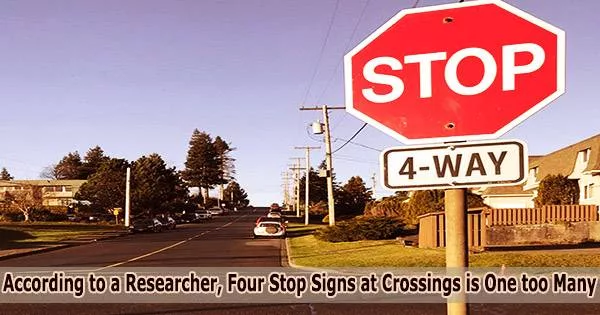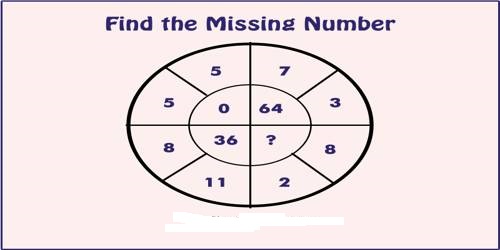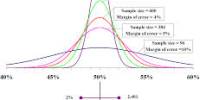The majority of American drivers find it annoying to stop at a stop sign as they approach a junction. Jiasun Li, a professor of finance at George Mason University, sees it as a problem that needs to be handled.
His most recent working paper suggests deleting one stop sign from each four-way intersection as an easy and affordable upgrade. He calculated that this would increase both driver safety and environmental sustainability.
Li specializes in game theory, which models strategic interactions where rational agents seek as humans generally do–to optimize outcomes for themselves. As he drove around Fairfax, Virginia, Li could not help but view four-way intersections through this academic lens.
He had the uneasy feeling that placing four stop signs at a crossroads was a poor strategy for reducing traffic collisions. They reduced the possible penalty of not stopping at the crossing because drivers could presume that other automobiles, if any, would stop at the intersection. Drivers turning right, a shallower maneuver with less exposure to oncoming traffic, would have the greatest motivation to ignore the sign because they had the least risk initially.
Li surmised that the outcome of all drivers obeying the sign fell short of a Nash equilibrium–game theory’s term for a stable set of norms that all parties are incentivized to follow.
His working paper presents mathematical models that support his intuition. Comparing the risks of collision against the gains from ignoring the sign (i.e. a smooth driving experience or conserving gasoline), he finds that a symmetric equilibrium under the current four-sign mechanism to be one in which left-turners and straight-line travelers honor the stop sign but right-turners do not.
Of course, in real life, people are more likely to obey stop signs because of fear of getting cited for a moving infraction. Nonetheless, Li claims that the need for law enforcement is not optimal. If the four-way stop system were self-enforcing, expensive police resources could be diverted from punitive measures for traffic infractions and toward investigating severe crimes.
Li’s working paper initially examines what would occur if traffic regulations were altered to permit right-turners to lawfully run stop signs. In an intersection with four stop signs, this would indeed prevent accidents.
However, many U.S. intersections have only two signs, which would place right-turners at risk of colliding with traffic coming from the left. In addition, Li argues that old habits die hard, including behind the wheel.
Importantly, although the safety and incentive analysis rely on game theoretical reasoning, once implemented, a three-sign mechanism does not require any changes in behaviors for law-abiding drivers.
Professor Jiasun Li
“If you need people to change their behavior, that’s going to be difficult,” he says.
Instead, Li recommends removing one sign any sign from among the four. In that instance, drivers would be aware that disregarding a stop sign could result in them colliding head-on with an approaching vehicle that has not been instructed to stop. There would be no need for the threat of police punishment because everyone would be motivated to comply by terror.
“Importantly, although the safety and incentive analysis rely on game theoretical reasoning, once implemented, a three-sign mechanism does not require any changes in behaviors for law-abiding drivers,” Li says.
Further, Li’s back-of-the-envelope math suggests that his relatively mundane change could be surprisingly impactful. He calculates that there are roughly one million four-way junctions with stop signs in the United States, each of which is traveled by more than 760,000 vehicles annually based on official information from various U.S. authorities. That amounts to more than 760 billion (760,000 × one million) stops and starts in a year, one-fourth of which (190 billion) would be avoided in a three-sign setup.
According to Li’s calculations, assuming it takes 124.9 kilojoules of work to bring a car of average weight to a full stop, and the same amount to resume the previous level of speed, adopting a three-sign system would save a total of 118.65 trillion kJ in the U.S. per year. That equates to one billion gallons of gasoline, or about 2.7 days’ worth of national gas consumption.
Looking farther out on the technological horizon, Li speculates in the paper that “when self-driving cars finally become real, our new simpler mechanism may also economize AI computational costs.”
Li has no illusions about the resistance his recommendation may provoke. “You’re challenging people’s conventional wisdom. If there’s criticism, that’s to be expected. For example, some cops might not like this idea, because I’m taking away one of their income sources, even though there could be an overall gain to the whole society.”
This work is just one example of what Li sees as a scholarly mission to apply unique perspectives in this case, an economics viewpoint derived from game theory to real-world issues, particularly ones that have been accepted as normal for so long that they are not even acknowledged as issues.
“Economics thinking should be applicable to a lot of different fields and improve our daily lives,” Li explains.
What seems totally natural in one context, after all, may be foreign in another. Many countries including China, where Li was born don’t use four-way stop intersections. “If I grew up with these stop signs, I probably wouldn’t think about it,” he says.
Li cites this as an illustration of how varied experiences and ideas brought in by way of immigration can benefit receiving countries. Li doesn’t intend to be the last word on the subject; rather, she wants to spark a broad discussion about how to improve communities and surroundings.
“I would rather have the discussion ongoing and people give me ideas,” he says. “Only through debate will people understand it better.”
















